We left port this morning, so long Uruguay! The port of Montevideo We had a bit of a delay waiting for a large container ship (600ft) to get pulled out with tugboats ahead of us. Then it was our turn. It’s fun to watch the tug boat and trust that even though it looks like you’re about to hit another ship, they’ve got it under control. On our amble out of port we got some lovely last views of the Montevideo skyline, including the striking telecommunications building. We also passed a livestock boat, a shipyard graveyard and many of the shipping container dinosaurs that dot the docks edges. The port of Uruguay seems to be hopping. We followed out a large shipping container but also passed at least 50 more anchored for miles near the shipping lane and out to sea.
One of the senior scientists on the boat knew about a German boat that was sunk just outside the shipping lane. All of the science crew crowded onto the sky deck (just above the bridge) to watch the scene and spot the remains of the ship. Just a few buoys out we sighted it, and with binoculars we could make out part of a smoke stack and other rusted and barnacle-covered bits of this old wreckage.
An Uruguayan pilot was aboard our ship while we clearer port and getting him off the ship was quite the show. A small vessel drove up to our starboard side and the pilot waited on our deck. Once the small boat was close enough he just stepped over the side onto a tall platform and climbed down to safety. He was wearing a nice suit and cap, no life vest (we don’t need no stinking life vest!). Very impressive, even if it seemed wildly unsafe.
We’ve been underway for about 9 hours now and so far so good. We’ll reach our first test station tomorrow, let the science begin! 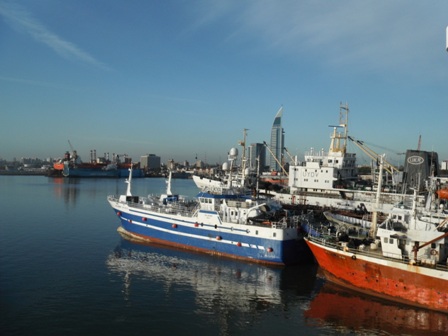
Puerto de Montevideo (Telecommunications Building in the background)
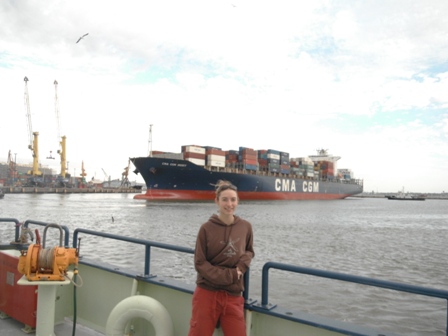
Waiting for the container ship to get on its way 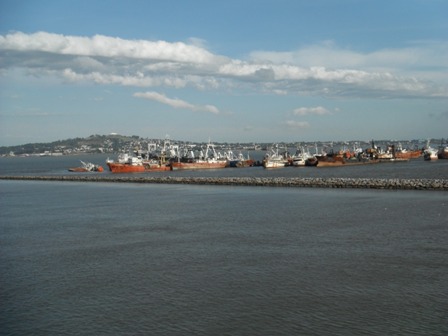
Ship graveyard
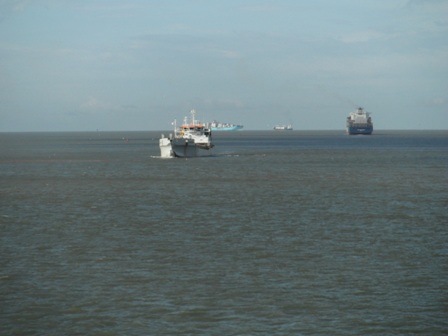 Busy Shipping Lane
Busy Shipping Lane
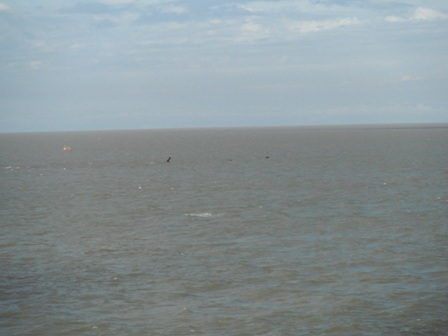 WWII German Boat Wreckage
WWII German Boat Wreckage
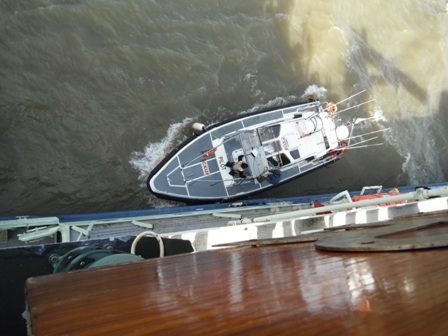 Pilot gets off the RV Knorr
Pilot gets off the RV Knorr

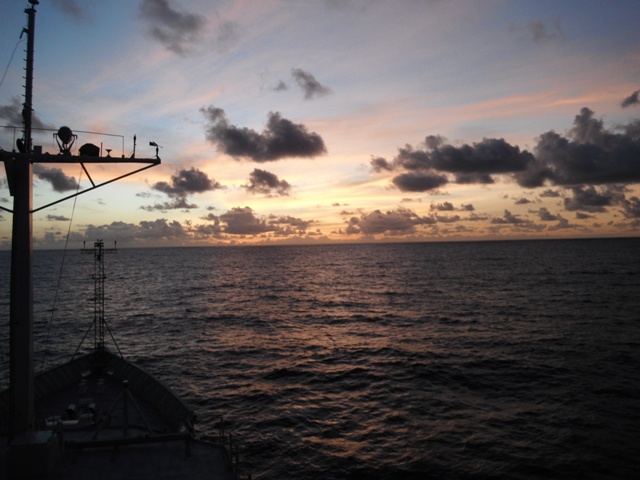
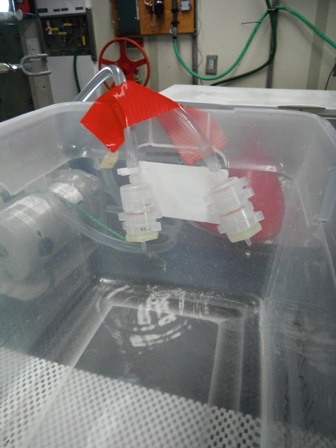
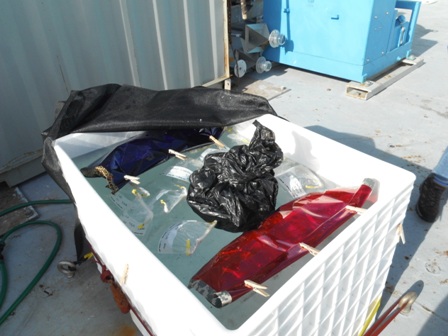
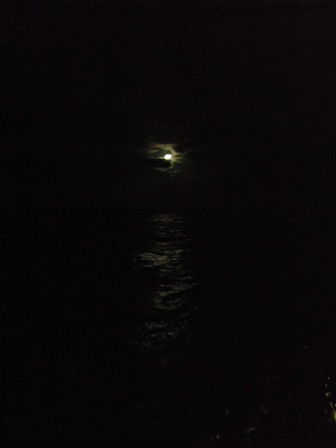
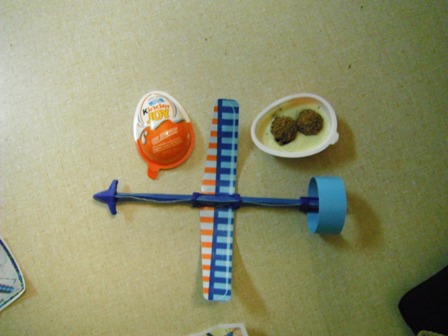
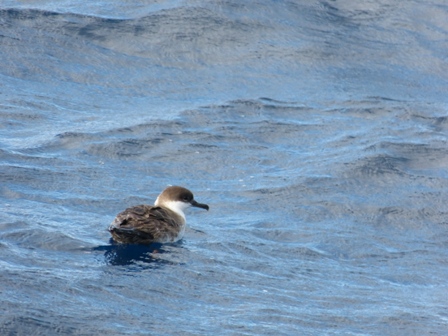
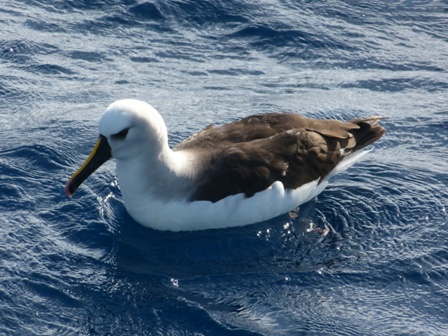 Great Shearwater (upper), Yellow-nosed Albatross (lower) from Colleen Durkin
Great Shearwater (upper), Yellow-nosed Albatross (lower) from Colleen Durkin




